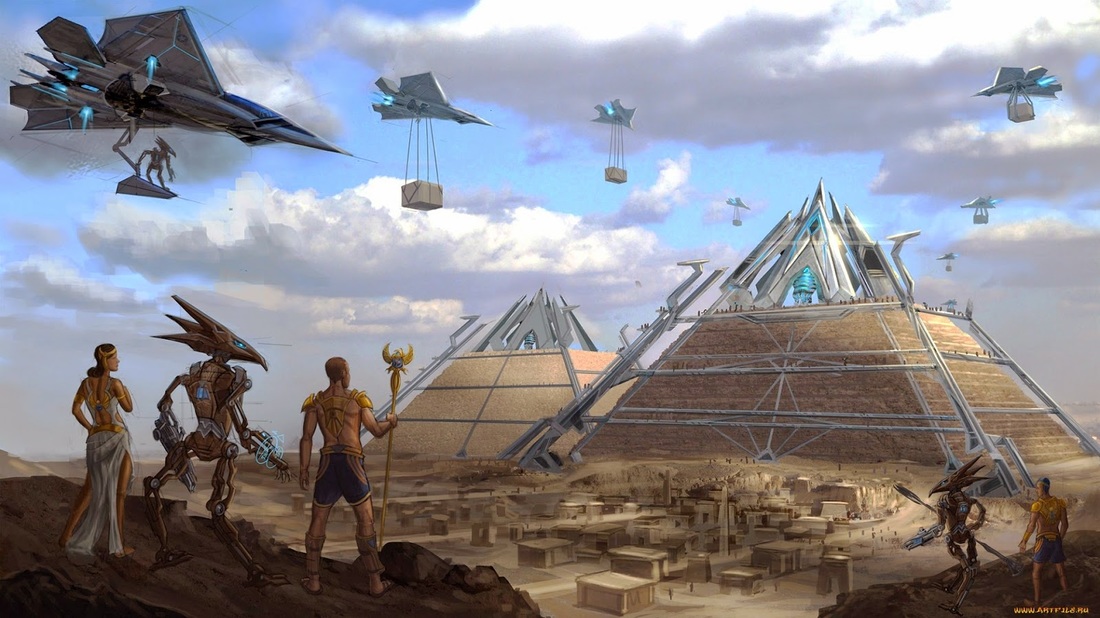The pyramids, majestic and enigmatic, loom over the sands of Egypt, their imposing structure an intricate tapestry of history, culture, and possibly, extraterrestrial influence. As one gazes upon the Great Pyramid of Giza, the mind is often drawn into an abyss of questions, not only regarding the architectural prowess of ancient civilizations but also the plausibility of ancient aliens playing a role in this monumental undertaking. This exploration seeks to unravel the interwoven threads of archaeology, mythology, and fringe theories that feed into the discourse surrounding the pyramids and their alleged extraterrestrial connections.
The ancient Egyptians were not merely builders but also custodians of profound knowledge. The construction of the pyramids demands an appreciation for the sophisticated understanding of mathematics, astronomy, and engineering possessed by these ancient architects. Scholars argue that the alignment of the pyramids with celestial bodies exemplifies this profound comprehension. The Great Pyramid, for instance, is aligned with remarkable precision to the cardinal points, suggesting a harmonious connection between earthly endeavors and heavenly phenomena. Such meticulous alignment invites speculation about the possible influence of advanced knowledge, possibly transmitted by extraterrestrial beings.
Yet, to imbue the achievements of ancient Egyptians with extraterrestrial origin diminishes the ingenuity and resilience of a civilization that thrived for thousands of years. The essence of humanity’s saga is deeply embedded in perseverance and discovery. The pyramids, soaring symbols of this, were constructed using vast amounts of labor and resources, painstakingly gathered and organized by a society fueled by innovative techniques and spiritual motivations. To propose that alien intervention was necessary undermines the narrative of human achievement.
Nevertheless, the intrigue of the ancient aliens theory persists, capturing the imagination of many. This fascination transcends academic boundaries, infiltrating popular culture through documentaries, literature, and even mainstream media. The premise that beings from other worlds aided in the construction of monumental edifices resonates within a profoundly human curiosity about our origins and our place in the cosmos. Metaphorically, this theory can be viewed as a modern-day myth, a means for individuals to grapple with the vast unknowns of existence—speculating that perhaps we are not alone in our architectural and creative ventures.
Moreover, one cannot overlook the cultural ramifications of these narratives. The legends surrounding ancient aliens often draw parallels with other mythical constructs throughout history. Comparable to how the Greeks attributed divine assistance to their gods, so too do modern proponents of the alien theory postulate that extraterrestrial entities acted as architects of human progress. This narrative crafting invites audiences to ponder questions of agency and destiny, redefining who or what shapes our world.
The crux of the debate centers on evidence—or the perceived lack thereof. Skeptics confront the ancient alien hypothesis with the robust findings of archaeology, emphasizing the copious artifacts, writings, and remnants left behind by the Egyptians that elucidate their capacities and achievements. The well-documented labor force involved in constructing the pyramids, consisting mostly of skilled workers rather than slaves, unveils the societal structure and organization that enabled such monumental construction. Yet, the allure of the alien theory endures, often fueled by gaps in historical record and the allure of the unknown.
Connecting these ideas, one begins to see a broader canvas—a tapestry of human ambition, perhaps tinged with the strokes of otherworldly speculation. This duality encapsulates an essential aspect of discourse surrounding the pyramids: the push and pull between reverence for ancient ingenuity and the captivating, if unfounded, hypothesis that we might have had help from the cosmos. The pyramids stand not merely as symbols of death and the afterlife for the Egyptians but as an allegory for humanity’s eternal quest for enlightenment, driven even by the prospect of divine or extraterrestrial assistance.
Additionally, one must consider the implications that the ancient alien theory carries in contemporary society. The search for extraterrestrial intelligence and the fascination with unidentified aerial phenomena reflect humanity’s inherent tendency to look beyond the terrestrial. This yearning fuels a cultural dialogue about our future as a species. The question persists: if we were truly helped by ancient astronauts, what does that mean for our capabilities and potential? Could it mean that we are on the brink of transcending our own limitations, awaiting the next chapter in human evolution?
In conclusion, the debate over ancient aliens and the pyramids serves as a microcosm of humanity’s broader quest for meaning in the cosmos. It inherently challenges our understanding of history while simultaneously binding us to our innate curiosity about the universe that envelops us. The pyramids, while representing historical milestones, act as a prism through which we can examine our past, speculate on our future, and ultimately remind ourselves that the journey of inquiry—a blend of fact, myth, and speculation—is a defining characteristic of human existence. Whether grounded in empirical evidence or spirited conjecture, this discourse continues to thrive, appealing to the heart of humanity’s indomitable spirit and insatiable desire to uncover truths, both earthly and celestial.
